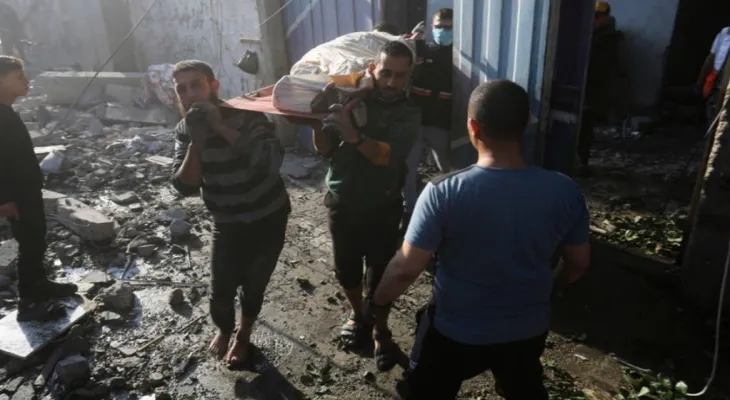Search here
Newspaper
Search here

Arab Canada News
News

Published: December 2, 2023
Egyptian and regional sources stated that Tel Aviv informed several Arab countries of its desire to establish a buffer zone on the Palestinian side of the Gaza Strip border to repel any future attacks against it as part of proposals concerning the sector in the post-war phase.
The situation in Gaza after the war
“Regional sources” revealed that Israel informed its neighbors Egypt and Jordan, along with other Arab countries and Turkey, about this idea.
The initiative is not an indication of the nearing end of the Israeli war that resumed yesterday, Friday, after a 7-day truce, but it shows that Israel is communicating with countries other than the well-known Arab mediators, such as Egypt or Qatar, in its quest to determine the situation in Gaza in the post-war period.
No Arab country has announced its readiness to manage Gaza in the future, and most have strongly condemned the Israeli attack on the sector, which claimed the lives of more than 15,000 and destroyed vast areas of urban zones in the sector.
A three-level plan
In this context, a senior regional security official, one of three sources who requested anonymity, confirmed that “Tel Aviv wants to establish this buffer zone between Gaza and Israel from north to south to prevent any infiltration or attack on it by Hamas or any other militants.”
Regarding the idea of establishing a buffer zone, Israeli Prime Minister Benjamin Netanyahu’s foreign policy adviser, “Avi Volk,” explained in remarks to Reuters: “The plan holds more details than that. It is based on a three-level process for the day after the elimination of Hamas.”
Volk added that the three levels include destroying Hamas, disarming Gaza, and eliminating extremism in the sector.
The Netanyahu adviser continued: “The buffer zone may be part of the disarmament process,” and he refused to provide details when asked whether these plans had been raised with international partners, including Arab countries.
It is noteworthy that Arab countries reject Tel Aviv’s goal of destroying Hamas, describing it as impossible, saying that the Palestinian movement is more than just an armed force that can be defeated.
Displacement of Palestinians from Gaza
Meanwhile, a U.S. official, who requested anonymity, indicated that Tel Aviv “raised” the idea of the buffer zone without specifying the party on which it raised it, but the official reaffirmed America’s opposition to any plan that would reduce the area of Palestinian lands.
Concerns are increasing for Jordan, Egypt, and other Arab countries about Israel’s potential expulsion of Palestinians from Gaza, repeating the confiscation of land from Palestinians at the time of the establishment of the state of Israel in 1948, while the Israeli government denies any such objective.
For his part, a senior Israeli “security source” stressed that the idea of the buffer zone is “under study,” pointing out that “it is not currently clear how deep it is (the buffer zone) and whether it might reach one kilometer, two kilometers, or hundreds of meters (inside Gaza).”
It is noted that any incursion into the Gaza Strip, which is about 40 kilometers long and ranges in width between 5 kilometers and 12 kilometers, would result in besieging its 2.3 million inhabitants in a smaller area.
It is mentioned that both Egypt and Qatar are mediating talks with Tel Aviv focusing on the release of prisoners held by Hamas in exchange for the release of Palestinians detained in Israeli prisons.
Comments